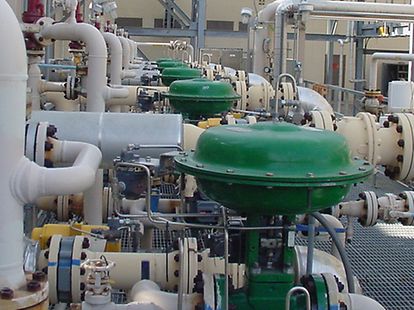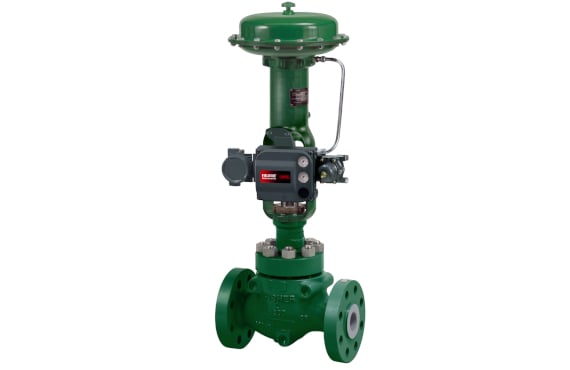Enhancing Functional Efficiency with Advanced Control Valves
Enhancing Functional Efficiency with Advanced Control Valves
Blog Article

Maximize Energy Cost Savings and Comfort With Advanced Structure Automation Controls
In the world of modern design and center administration, the assimilation of sophisticated structure automation controls stands as an essential development. The merging of modern technology and sustainability has actually birthed a new era where energy effectiveness, comfort optimization, and functional streamlining are no much longer distant ambitions but achievable realities. By utilizing the power of automation, buildings can adjust, respond, and evolve in methods that were as soon as inconceivable. The capacity for considerable power cost savings and enhanced comfort is not just a pledge yet an opportunity waiting to be satisfied. This standard shift in structure management holds the key to unlocking a globe where ecological conscientiousness and occupant wellness sympathetically exist side-by-side within the wall surfaces of our frameworks.
Power Efficiency Advantages
Power performance benefits can substantially decrease power consumption and functional costs in buildings. By applying energy-efficient techniques and innovations, building proprietors and operators can accomplish substantial financial savings while additionally adding to ecological sustainability. One of the primary benefits of enhancing power efficiency in buildings is the reduction of energy bills. Energy-efficient systems, such as sophisticated building automation controls, can enhance using sources like illumination, heating, and air conditioning, leading to lower power expenditures with time.
In addition, enhanced power performance can extend the life expectancy of structure devices and systems. By operating extra efficiently, heating and cooling systems, light, and various other building parts experience less wear and tear, leading to decreased maintenance and substitute prices. In addition, energy-efficient structures typically command greater property worths and rental rates, giving long-term economic benefits to proprietors.
Additionally, energy efficiency can improve owner comfort and efficiency. Appropriately managed interior settings with optimum lighting and thermal conditions produce an even more enjoyable and conducive work space, leading to enhanced employee complete satisfaction and performance. Overall, the power performance advantages connected with sophisticated building automation controls are diverse, encompassing expense savings, environmental stewardship, and occupant health.
Boosted Comfort Control
Enhancing convenience control in building environments calls for a sophisticated assimilation of advanced automation systems for optimum owner wellness. By making use of sophisticated structure automation controls, centers can tailor the interior setting to meet the specific requirements and preferences of occupants. These systems make it possible for specific law of illumination, temperature, and ventilation, producing a productive and comfortable environment. Owner complete satisfaction and efficiency are carefully linked to thermal comfort, making it important to have systems in position that can adjust to changing problems in real-time.
By integrating these sophisticated controls, structures can not only boost convenience however likewise improve energy effectiveness by optimizing system procedures based on real tenancy and usage patterns. Ultimately, prioritizing owner comfort via innovative automation systems leads to a much more delightful and much healthier interior atmosphere.
Functional Performance Improvements

Moreover, the execution of real-time surveillance and analytics devices allows structure drivers to recognize energy ineffectiveness and operational abnormalities immediately. By constantly keeping an eye on energy use patterns and system efficiency metrics, changes can be made in real-time to enhance energy intake and ensure peak functional efficiency. control valves. Furthermore, including need action strategies into structure automation controls can better enhance operational performance by dynamically changing energy usage based upon grid problems and rates signals
Indoor Climate Optimization
Reliable interior environment optimization is an essential element of structure automation controls, making sure residents' comfort and well-being while optimizing power savings. By utilizing innovative sensors and controls, building automation systems can continuously keep an eye on and adjust temperature level, moisture levels, air high quality, and air flow to create an optimum interior environment. Keeping comfy and regular conditions not only improves occupant complete satisfaction however additionally boosts productivity and general health.
Indoor climate optimization also plays a critical duty in power performance. By fine-tuning home heating, air flow, and cooling systems based upon real-time data and occupancy patterns, building automation controls can substantially minimize energy consumption - control valves. Executing strategies such as demand-controlled air flow and thermal zoning can help minimize energy waste while making sure that each area of the building obtains the required conditioning.

Lasting Setting Production
Building automation manages not just optimize interior climate conditions for power effectiveness and owner convenience but likewise lay the structure for creating a lasting environment through critical monitoring of systems and sources. By incorporating advanced structure automation technologies, such as sensing units, actuators, and smart software program, centers can keep an eye on and change energy usage in real-time to minimize waste and lower their carbon impact. These systems enable anticipating maintenance, determining potential concerns before they escalate and maximizing devices efficiency to improve durability and effectiveness.
In click addition, lasting atmosphere production extends beyond energy administration to incorporate water conservation, waste reduction, and interior air quality enhancement. Structure automation controls can regulate water use, spot leakages, and ensure appropriate waste disposal methods, contributing to general sustainability initiatives. Furthermore, by checking and managing ventilation and filtration systems, these innovations enhance owner health and efficiency while news lowering energy consumption related to cooling and heating operations.
Verdict
Finally, progressed structure automation controls deal significant advantages in terms of power financial savings, comfort control, operational efficiency, indoor environment optimization, and creating a sustainable atmosphere. By executing these controls, buildings can achieve optimal performance while minimizing energy usage and boosting passenger convenience. It appears that making use of innovative automation technology is essential in boosting structure efficiency and developing a more sustainable future.
Energy effectiveness advantages can dramatically decrease energy intake and operational costs in structures. In general, the power effectiveness benefits linked with innovative structure automation controls are diverse, incorporating expense savings, ecological stewardship, and owner well-being.
Additionally, incorporating demand reaction approaches right into structure automation controls can better enhance functional effectiveness by dynamically adjusting power usage based on grid conditions and pricing signals.
Building automation controls not just maximize indoor environment problems for energy effectiveness and owner comfort yet additionally lay the foundation for producing a sustainable environment via tactical management of systems and resources.In conclusion, progressed building automation regulates offer substantial benefits in terms of energy cost savings, comfort control, operational efficiency, indoor climate optimization, and click for more producing a sustainable environment.
Report this page